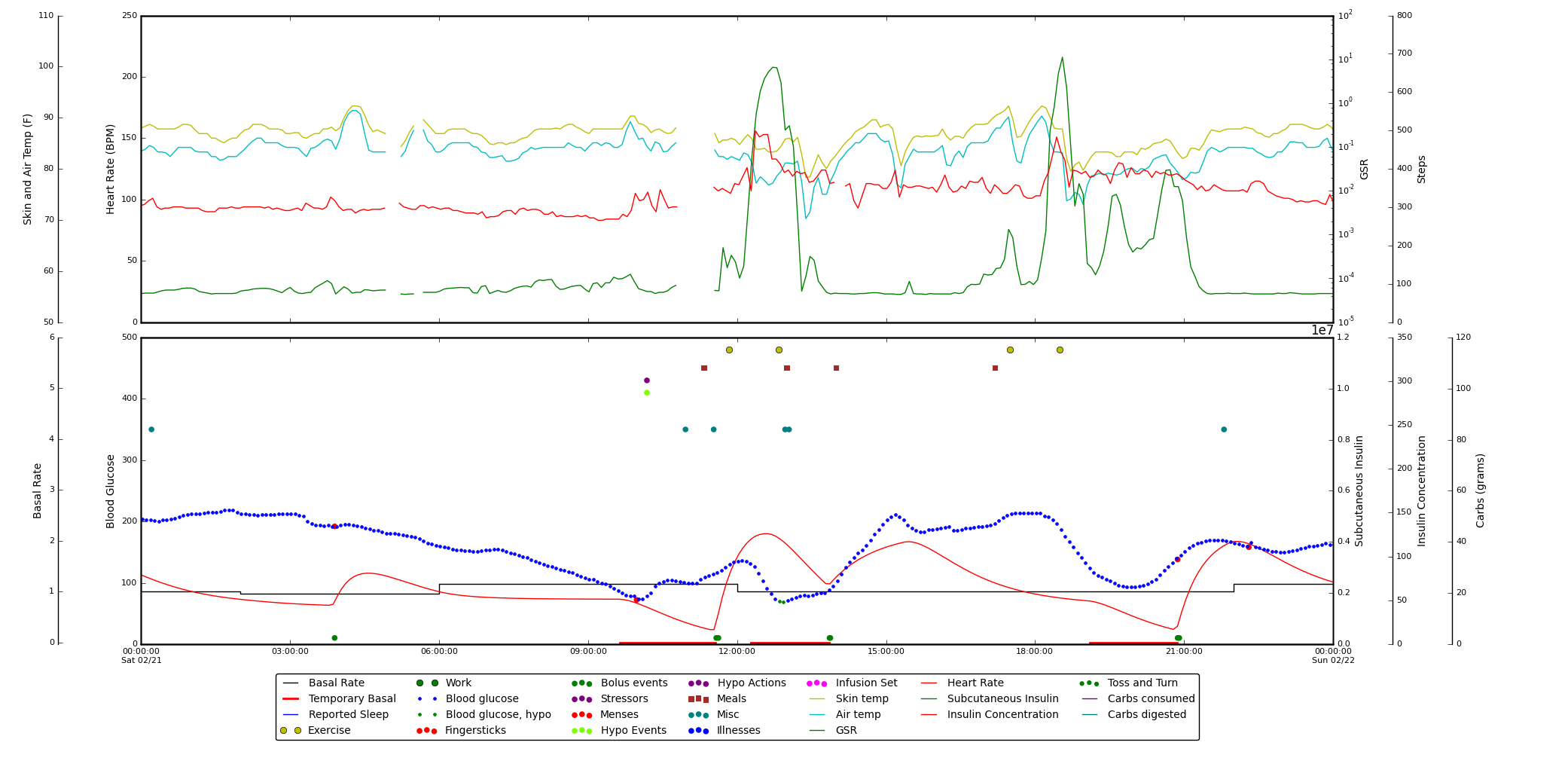
PI: Razvan Bunescu
Contact: rbunescu @ uncc . edu
To aid in diabetes management, machine learning models are being built to predict future blood glucose levels based on wearable sensor data from commercially available fitness bands in addition to blood glucose, insulin and meal data. These models could help the over one million Americans with type 1 diabetes to anticipate and prevent blood glucose control problems before they occur. This would enhance patient safety and contribute to improved overall blood glucose control, with its associated reduction in costly complications.
Below is a visualization of the patient data used for blood glucose level prediction, as seen in the OhioT1DM Viewer. The top pane shows fitness band data, including heart rate, galvanic skin response, skin temperature, and air temperature. The bottom pane displays blood glucose, insulin, and life event data. As part of this project, the data collected is being de-identified and shared with other researchers to encourage collaboration and promote progress in the field. The first ever Blood Glucose Level Prediction Challenge was held at the Federated AI Meeting in Stockholm, Sweden, in July, 2018, as part of the 3rd International Workshop on Knowledge Discovery in Healthcare Data. Interested researchers can click here to learn more about the OhioT1DM Dataset. We are also releasing LSTM and ARIMA code for blood glucose prediction, implemented in Keras and Tensorflow, and LSTM and N-BEATS code for carbohydrate and bolus recommendation, implemented in PyTorch.


|

|

|